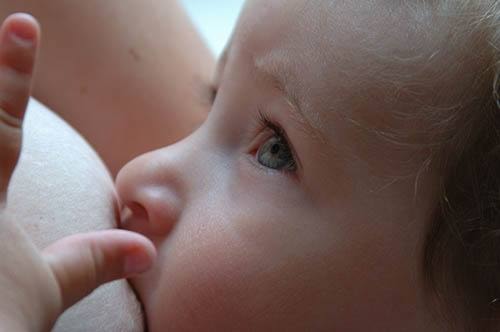Michelle Dennill knows from her own family experiences what a precious commodity is breast milk.
She spent most of a year as a breast milk donor.
As the Fraser Health Authority works to become “baby friendly,” with Maple Ridge the startup community, they asked the Chilliwack mother of three to encourage mothers here to donate their breast milk.
Dennill had two family members who had problems getting breast milk. One was diabetic, and the other was advised by a midwife to get donor milk for her newborn.
The medical community advises women to breast feed, and failing that their next best option is to get donated breast milk.
Both of them had a difficult time getting enough for their newborns’ needs.
“When I had my baby, I was really committed that I was going to do it,” said Dennill.
She said it was easy, because it became part of her routine. After her baby was finished, she would express milk for another 10 to 15 minutes.
After approximately eight months, she had donated more than the minimum of 100 ounces requested by the milk bank when it signs up mothers.
“Everybody knows breastfeeding is best,” said Sidney Harper, who is leading the Baby Friendly initiative on behalf of Fraser Health.
She said 97 per cent of mothers want to breastfeed.
The list of health benefits is long. Colostrum (the first milk) coats a baby’s stomach, and protects the infant from infection.
One feeding of formula can change that coating.
Babies who receive breast milk have less diarrhea and vomiting, fewer infections and reduced incidence of a variety of health issues from childhood cancers to diabetes.
Baby Friendly is an initiative by the World Health Organization, and it seeks to break down barriers to mothers breastfeeding – be they institutional or cultural.
It recommends a newborn consume breast milk exclusively for six months. It also asserts that if a baby cannot get his or her mother’s milk, the next best option is donated breast milk, followed by formula.
“It’s a living fluid, which artificial milk can never be,” said Harper.
The process is straightforward. Women express or pump their milk and keep it in their freezer at home. They drop it off at the Maple Ridge Health Unit, which is now the fifth milk bank depot in B.C., joining others at the Chilliwack and Maple Ridge health units, Royal Columbian Hospital and Surrey Memorial Hospital.
The milk is transported to the B.C. Women’s Milk Bank in Vancouver, pooled and pasteurized, and then returned to the depot.
While the milk loses some of its nutritional benefit through this process, it is still the best food for babies, said Teri Porter, who is the Clinical Nurse Educator at Maple Ridge Hospital.
“We’re appealing to women to donate their milk,” said Harper. “This is Christmas – a good time to appeal.”
Women who wish to donate must first go through an online screening process, and some could be excluded over smoking, alcohol intake and for other reasons. There is a condition that their own baby is thriving. The milk bank also asks that they commit to a minimum of 100 ounces – to make the program cost effective. They receive no remuneration.
Canada is hardly a world leader in the baby-friendly initiative, lagging behind the U.K., China, Australia and many other nations. In Brazil, Harper noted, government workers pick up breast milk donations door-to-door.
“It’s a very valuable commodity, and there’s not enough of it here,” she said.
Harper explained that while a prototype milk donation project began in Chilliwack, Maple Ridge is the starting point for the Baby Friendly Initiative – and is in fact the starting place for all of B.C. All doctors and nurses at the Ridge Meadows hospital must be educated along with the public, which is porter’s job.
Linda Szilagyi is a community health nursing supervisor, and she said there will be more effort and support to have women breastfeed, and other aspects of the Baby Friendly Initiative, such as keeping newborns and their mothers together, with skin-to-skin contact, for a long as possible.
WHO ten steps to successful breastfeeding
for maternity service providers
1. Have a written breastfeeding policy that is routinely communicated to all health care staff.
2. Train all health care staff in skill necessary to implement this policy.
3. Inform all pregnant women about the benefits and management of breastfeeding.
4. Help mothers initiate breastfeeding within a half hour of birth
5. Show mothers how to breastfeed and how to maintain lactation if they should be separated from their infant.
6. Give newborns no food or drink other than breast milk, unless medically indicated.
7. Practice rooming-in – allow mothers and infants to remain together 24 hours per day.
8. Encourage breastfeeding on demand.
9. Give no artificial teats or pacifiers to breastfeeding infants.
10. Foster the establishment of breastfeeding support groups and refer mothers to them on discharge from hospital or clinic.
For information see www.bcwomensmilkbank.ca or call 604-875-2282.
